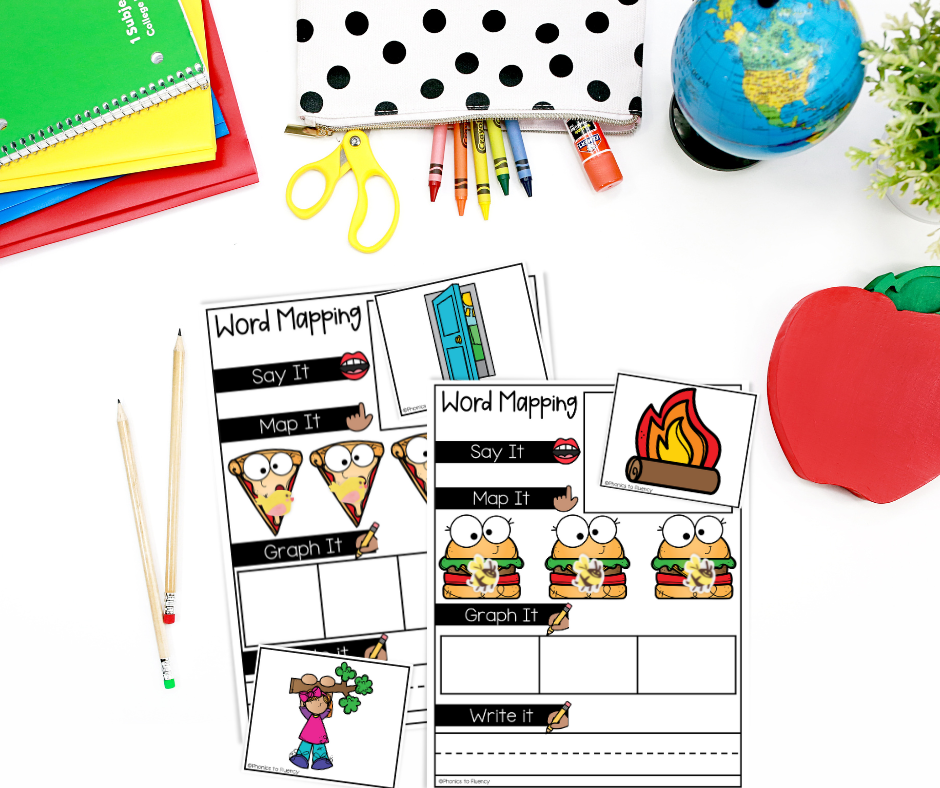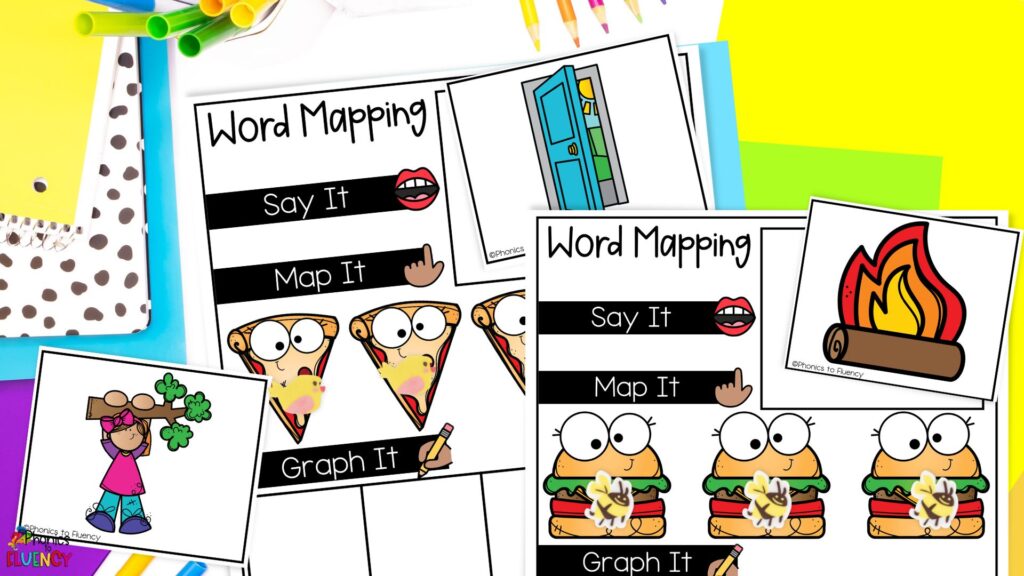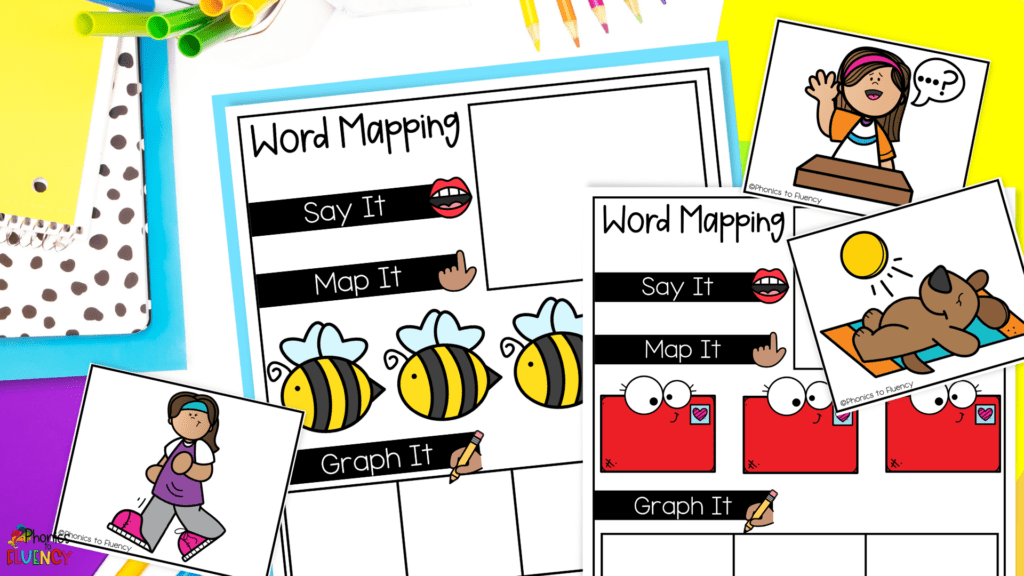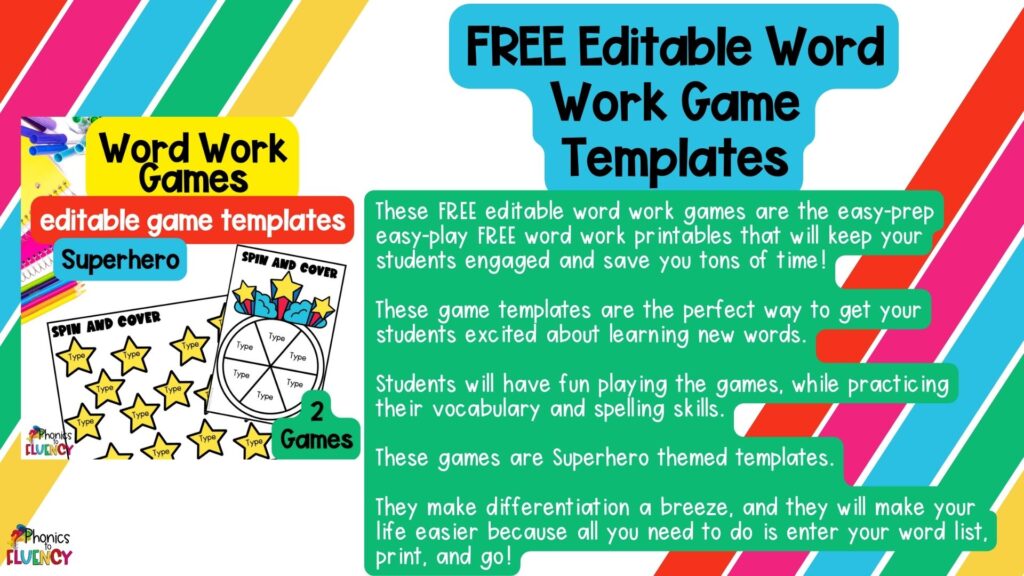
Word mapping saved me! I once found myself struggling to teach sight words effectively.
Despite my best efforts, it seemed that traditional teaching methods were falling short for my students.
That’s when I decided to dive deep into the science of reading, and it transformed my approach to teaching sight words.
In this blog post, I’ll share my insights and strategies to help you teach sight words based on the science of reading, ensuring your students become successful readers.
First, let’s clarify the difference between sight words, high frequency words, and heart words, as these terms are often used interchangeably and can be confusing.
The Science of Reading provides valuable insights into how the brain learns to read.
In simple terms, our brain uses four key processors to recognize and understand words: phonological, orthographic, meaning, and context.
The phonological processor helps us identify the individual sounds, or phonemes, that make up words.
The orthographic processor connects these sounds to the written letters, or graphemes, in words.
The meaning processor allows us to understand the meaning of a word, while the context processor uses the surrounding text to provide further clarity.
When we teach reading, focusing on these four processors helps students build strong connections in their brains.
This makes reading easier and more efficient.

When children learn to read, their brains engage in a process called orthographic mapping.
This involves creating mental representations of words that are stored in long-term memory.
This process is crucial for developing a strong sight word vocabulary and efficient reading skills.
To understand how the brain learns to read, we must first understand the three key components of reading: phonological awareness, decoding, and language comprehension.
The science of reading tells us that these components work together to create a solid foundation for reading success.
You must focus on all three components to help your students become fluent readers.
The multi-sensory approach to teaching sight words involves engaging your students’ senses to create a more memorable learning experience.
This can include using visual aids, such as flashcards or sound walls.
Incorporating tactile activities like tracing words with their fingers, and incorporating auditory cues through songs, chants, or rhymes.
By engaging multiple senses, you increase the chances of your students successfully mapping sight words to their long-term memory.
Orthographic mapping is a crucial process in the science of reading, as it enables students to develop strong sight word recognition skills.
Through orthographic mapping, students create mental representations of words that are stored in long-term memory.
This allows them to recognize words quickly and efficiently as they read.
One effective strategy for teaching sight words based on orthographic mapping is using word mapping and word mapping mats.
Orthographic mapping is a vital component of the science of reading and is essential for developing strong sight word recognition skills.
We’ll explore this approach more and provide examples of how you can incorporate it into your classroom.
@phonicstofluency Strategies for phonemic awareness – reinforce letter sound knowledge with word mapping – science of reading #scienceofreading #orthographicmapping #teachersoftiktok #phonemicawareness #wordmapping
Word mapping is an instructional technique that helps students visually break down words into their individual components, such as letters or letter patterns.
This method supports the development of orthographic mapping skills by allowing students to recognize the structure and patterns within words.
This in turn supports their sight word recognition.
Word mapping mats are visual aids designed to help students practice breaking down and mapping sight words.
Using word mapping and word mapping mats in your classroom can help your students better understand the structure and patterns within words.
This enables them to recognize sight words more efficiently

When introducing sight words to students, use a step-by-step approach that activates each processor in their brain.
For example, with the word “they”:
When students practice and review sight words, use the “tap it, map it, graph it, write it” routine to promote the orthographic mapping process.
Follow these detailed steps:

Incorporate sight words into guided writing activities by using dictated sentences that include the high-frequency words students have been learning.
This helps students practice using the word in context and strengthens their understanding of the word’s meaning.
Try this Guided Writing Routine:
By incorporating sight words into guided writing activities you can help students build a stronger understanding of these essential words.
You will also improve their overall reading and writing skills.
Regular review is crucial for reinforcing sight word knowledge.
Offer a variety of engaging, multisensory activities that allow students to read, map, and write sight words.
Consider using orthographic mapping with word mapping mats or other resources that target sight word recognition and practice.
Here are some examples of activities to reinforce sight word learning:
By offering various engaging and multisensory activities for sight word review and reinforcement, you can help students solidify their understanding of these important words and enhance their reading and writing skills.

Teaching sight words based on the science of reading is essential for developing strong readers.
By understanding the role of orthographic mapping sight words, using a multi-sensory approach, and implementing the strategies outlined in this post; you can help your Kindergarten students become confident and fluent readers.
If you have anything that you’d like added to this post, feel free to leave a comment below.
XO – Kisha

Phonics to Fluency

It brings me so much joy creating high-quality, hands-on, research based Literacy and Math resources that are both engaging for students and save YOU time!

Let me give you some time back!
Just tell me where to send them…


I’d love to connect and get to know more about you!
Join the Phonics to Fluency community and connect, collaborate, and grow alongside other dedicated K-1 teachers and homeschool parents in our exclusive Facebook group.
© 2023 PHONICS TO FLUENCY | ALL RIGHTS RESERVED | SITE DESIGN BY AMY REIS CREATIVE
Subscribe to get a coupon code for 15% off your first purchase. PLUS receive regular updates and offers in the Phonics to Fluency newsletter,